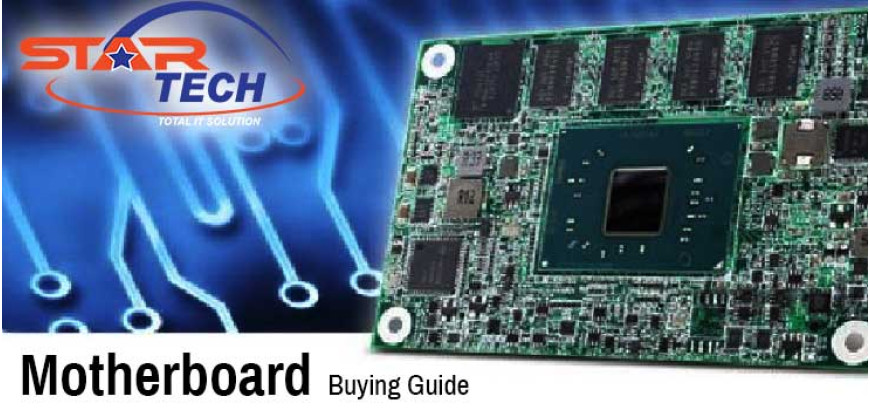A motherboard holds and connects all the components of a computer system. We tend to spend much time choosing processors, graphics card, RAMs, HDDs etc. But when it comes to compatibility and future upgrade, you must pick a motherboard having the required number of compatible slots and ports.
Choosing a wrong motherboard will be troublesome for you when you will be trying to install the components for the first time on the motherboard. Also, you may face problems in the future when you want to add or replace any component. We suggest you keep an eye on the following criteria while choosing the motherboard:
Processor (CPU) Support
Before choosing your motherboard, you need to decide which processor you are buying for your desktop computer. Intel and AMD are the two major designers and manufacturers of CPUs. The sockets of AMD and Intel are not interchangeable, which means a motherboard is designed having the socket standards of either Intel or AMD CPU. Moreover, if you want to overclock your processor, you need to choose a motherboard with improved power management, additional heat dissipating facilities and right CPU multipliers and voltages.
Motherboard Size or Form Factor
Form factor means the physical size of the motherboard. Standard ATX, micro-ATX and mini-ITX– these are the 3 traditional sizes of motherboards. They all have a different number of slots. So, you need to choose your motherboard based on the size of your casing and also the number of peripherals like RAMs, GPUs, HDDs etc.
Expansions Slots and Connectors
Extra features such as onboard audio, wireless (wifi, Bluetooth), or RAID controller can be much convenient. But if you already have those as external peripherals/expansion cards or you don’t need some features at all, you can save money by selecting one that doesn’t have those features. Some peripherals require specific connectors or slot type, such as HDMI, Thunderbolt, USB 3.0, SATA, PCI-Express, VGA port etc. Check those slots and connectors in the specifications.
Memory Sockets
There are three standards of RAMs: DDR/DDR1, DDR2, DDR3, and DDR4. A DDR4 RAM is not backward compatible with a DDR3 motherboard and vice versa. Similarly, DDR2 and DDR3 or DDR and DDR2 are not compatible nor interchangeable. That’s because each slot-type has a different number of pins and other characteristics that suit only one type of RAM. So, you need to choose your motherboard according to your old or new RAMs.
Conclusion:
ASRock, ASUS, GIGABYTE, Esonic, and Redfox are the prominent motherboard brands in Bangladesh. You can browse through their latest products on Star Tech website and check the detailed specifications and price to understand the motherboard features and match them with your budget. If you are in Bangladesh, you can order it online and get it delivered to your doorstep with cash-on-delivery. Our best wishes to you.



Comments
There are no comments for this Article.